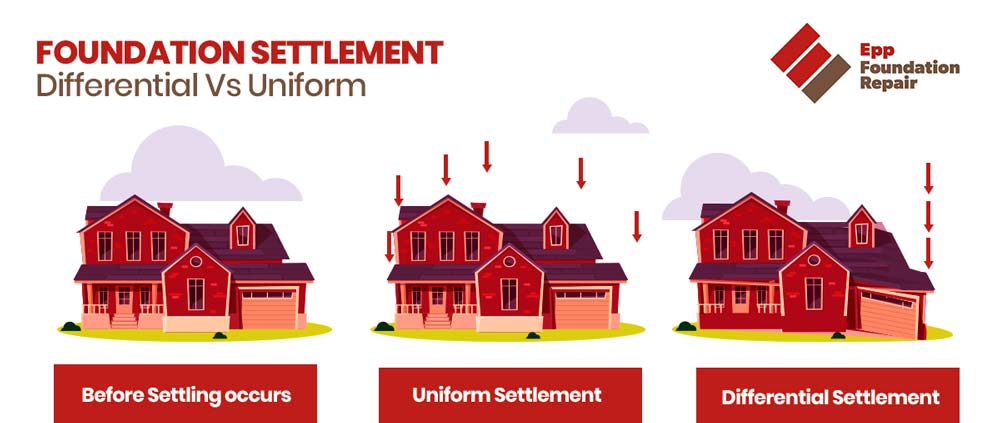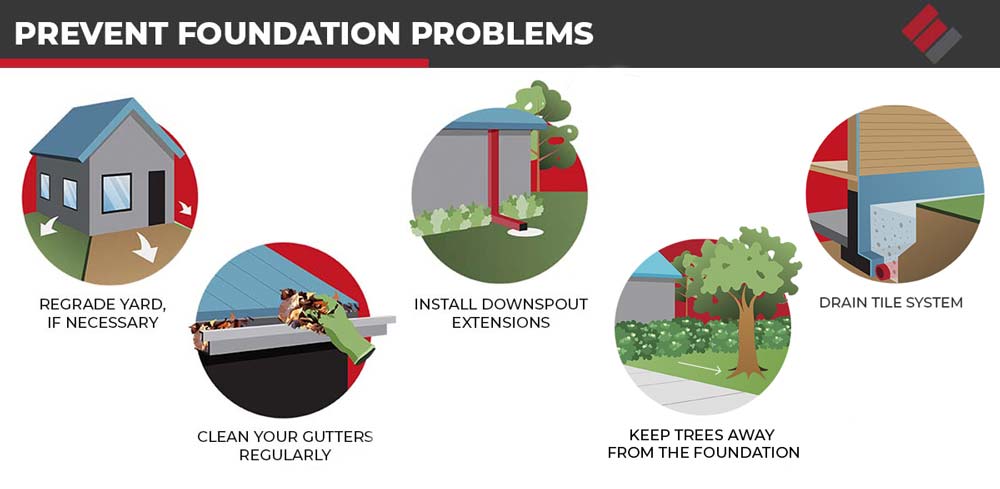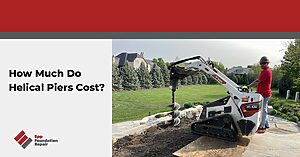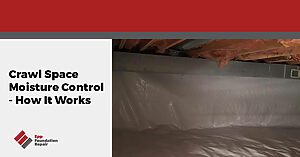Are you considering using helical piers to repair your home’s foundation? There are many contributing factors that come into play, when it comes to the overall cost of this type of repair. In this article, you will learn how underpinning works, how much helical piering costs, how the piers are installed, and more.
What Are Helical Piers?
Helical piers (also known as screw piles) are one of the most popular and effective solutions for foundation repair. They are steel shafts that are screwed deep into the ground, providing solid support for the foundation above.
Helical piers have a helix (spiral) shape, which enables them to be twisted into the soil with minimal disturbance. The helix design ensures that the pier remains securely anchored, even when the soil shifts or settles.
Helical piers are commonly used to repair foundations that have been damaged by differential foundation settlement or a foundation has settled into the ground unevenly. The best way to describe differential settlement is through an illustration:

Helical piers can be installed quickly and easily, and do not require heavy equipment or extensive excavation. This makes them ideal for foundation repair projects in residential, commercial, and industrial settings.
In addition to their ease of installation, helical piers offer several other advantages over traditional foundation repair methods. They are highly durable and can withstand extreme conditions like earthquakes or floods. They are also environmentally friendly, and do not require harmful chemicals or materials.
For more information, see our article What Is Underpinning?
How Much Do Helical Piers Cost for Foundation Repair?
The cost of helical piers varies depending on several factors, including the size and condition of the foundation, the type and number of helical piers needed, and the property’s location. On average, homeowners can expect to pay anywhere from $1,000 to $15,000 per pier, with the total cost ranging from $5,000 to $50,000 or more for a complete foundation repair job.
Some factors that can affect the cost of helical piers include the depth of the pier placement, the size and weight capacity of the piers, and the complexity of the installation process. In general, larger and more complex repairs will require more piers and may take longer to complete, which can increase the job’s overall cost.
One of the benefits of using helical piers for foundation repair is that they are typically less expensive than other foundation repair methods, such as traditional concrete piers or complete foundation replacements, which are rarely necessary. Additionally, helical piers offer a durable and long-lasting solution for foundation problems and can often be installed in just a few days, minimizing disruption to the homeowner’s daily life.
If you are considering helical piers for foundation repair, it’s essential to work with a reputable and experienced foundation repair contractor who can provide accurate estimates and guide you through the repair process from start to finish. By investing in high-quality helical piers and professional installation, homeowners can make sure that their foundation repair job is completed with the utmost care and attention to detail, providing a stable and secure foundation for years to come.
How Are Helical Piers Installed?
The first step in the installation process is to assess the ground conditions and determine the appropriate size and type of helical pier.
Once the pier has been selected, the site is prepared and the helical pier is slowly rotated into the ground using a hydraulic torque motor. As the pier is turned, it will gradually be driven deeper into the soil until it reaches the required depth.
After the pier has been fully inserted into the ground, it is then attached to the foundation of the structure using a bracket or other similar device. This provides a secure connection between the pier and the foundation, ensuring the structure remains stable and secure.
A typical foundation repair using helical piers takes between 1-5 days to complete.
In summary, installing helical piers is a complex and precise process that requires specialized equipment and experienced professionals.
Helical Piers Pros and Cons
Pros
- Versatility – One of the key advantages of using helical piers for foundation repair is their versatility. They can be used in various soil conditions and on different properties. This is because helical piers can be customized to suit specific needs and installed at various depths.
- Quick Installation – Helical piers are relatively easy to install and can be done quickly. This makes them a popular solution for time-sensitive projects like emergency repairs.
- Long-lasting – Helical piers can last up to 150 years when installed correctly.
- Environmentally Friendly – Helical piers are considered an eco-friendly option for foundation repair because they involve minimal disturbance to the surrounding area. Unlike traditional methods that require digging and excavation, helical piers are installed using a small drilling machine, causing minimal disruption to the surrounding environment.
Cons
- Limited Load Capacity – Helical piers have a limited load capacity, making them unsuitable for large commercial or industrial buildings with heavy structural loads.
- Not Good for Rocky Soil – Helical plates can become damaged during installation if they are installed in rocky soil. Rocks can cause the plates to bend or break when they are being screwed in, which can compromise the stability of the entire foundation system. Furthermore, rocky soil can make it challenging to achieve the depth and torque required for properly installing the helical piers.
- Expensive – Helical piers are a more costly solution compared to other foundation repair options.
Tips on How to Help Prevent Foundation Problems
Foundation problems can be a major headache for homeowners and cause significant damage to their property. These issues can arise due to various factors, but there are some steps you can take to help prevent them from happening. Note that most of these involve controlling groundwater around the foundation. This is because most foundation problems are caused by excess moisture in the soil:

- Regrade your yard – This involves ensuring that the ground around the foundation has a slight slope away from the house, which allows water to flow away from the foundation and helps prevent moisture buildup.
- Clean gutters regularly – Regularly cleaning gutters is essential, as clogged gutters can prevent water from draining effectively and lead to water buildup around the foundation.
- Use downspout extensions – These help to direct water away from the foundation by channeling it to a safe distance from the house before release.
- Keep trees away from the foundation – Trees can cause damage to the foundation by drawing moisture away from the soil and creating voids that can lead to foundation settlement and structural damage. It’s best to keep trees at least 50 feet away from the foundation.
- Install a drain tile system – This involves installing perforated drainage pipes around the foundation at the footing level to allow water to drain away from the house and prevent water buildup around it. This can be an effective solution in areas with heavy rainfall or where water is likely to accumulate around the foundation due to the area’s topography.
If you think that your home might have a foundation problem, contact us today to schedule an evaluation. If we find a problem, we’ll give you a free repair estimate. We serve areas in four states: Nebraska, Iowa, Kansas, and Missouri.







